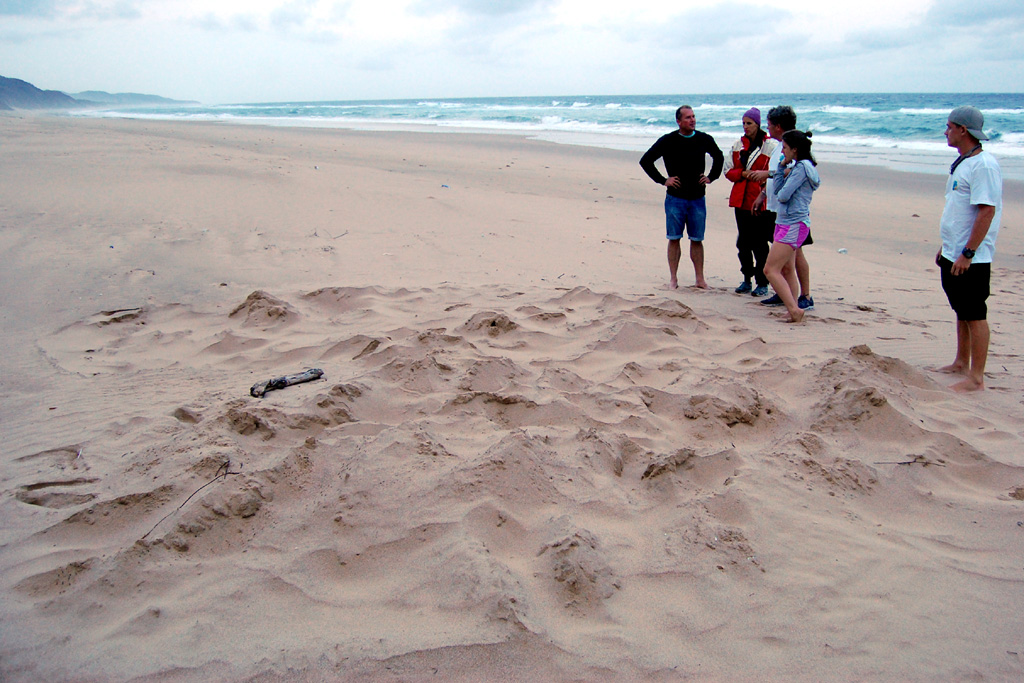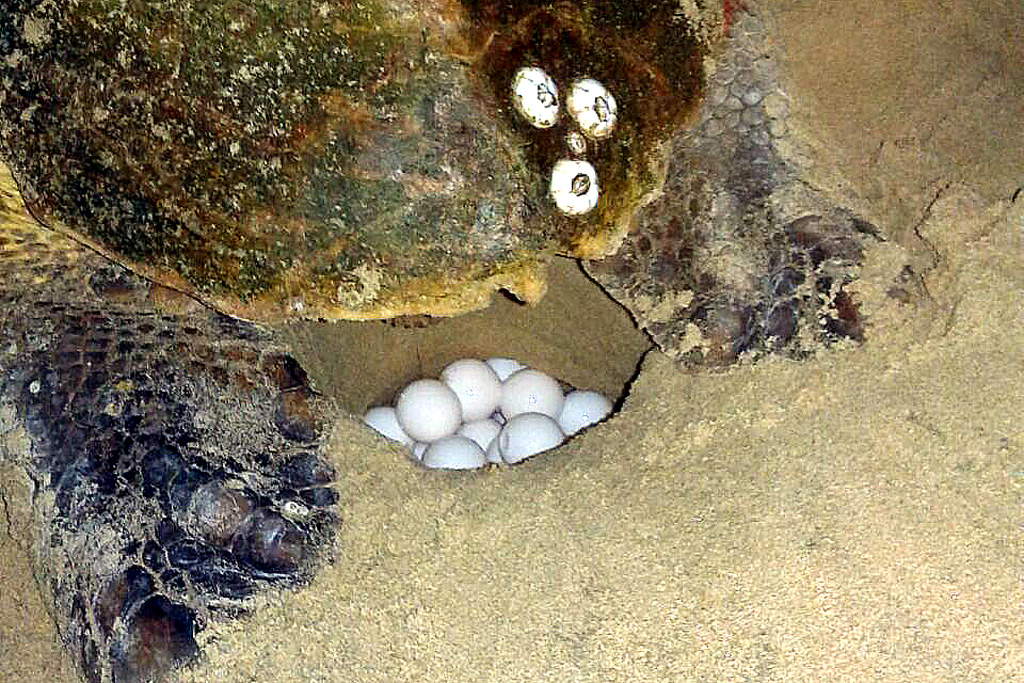The iSimigaliso Wetland Park is actually a huge area along the eastern coast of South Africa. In the internet we read about the possibility to see turtles nesting on the beaches of this wetland park. After some inquiries it turned out not to be a good year to see turtles and the very nice woman of Heritage Tours in St. Lucia told us to drive up to Sodwana Bay. So I made contact to Ufudu Turtle Tours which operates from Sodwana Bay up the coast and looks for turtles nesting between beginning of November until end of February. We met Peter of Ufudu Tours at the entrance to Sodwana Bay and started our tour just before low water so that they can drive many kilometers along the beach and not disturb the turtle nests. Peter told us a lot of facts about marine turtles, some even we did not know. The beaches here are protected and rangers go along every night to count the turtles, measure and tag them, count the eggs, take GPS coordinates of their nests and prevent poaching. Apparently some people still dig for turtle eggs along those beaches. All the collected information will then be send to a study group of the university and will hopefully help in restoring the turtle numbers.
Two species of turtles are nesting on those beaches. The loggerhead (Caretta caretta) and the biggest of them the leatherback turtle (Dermochelys coriacea). Sadly we did not see any leatherbacks but we saw an old and beautiful loggerhead while digging her nest. Loggerhead turtles usually come ashore about 3 to 6 times during the breeding season to lay about 100 to 120 eggs each time. They are digging very deep, about half a meter as far as their flippers will reach, and start laying right away. Once they are laying their eggs they are in a trance and you can touch them, take pictures and watch them closely without disturbing them. So that is the time the rangers measure the specimens, tag them and mark them with a microchip. Peter and the rangers always take care nobody gets too close too early and respects the turtles in their environment. Because if you disturb them they might go back into the sea without laying their eggs. But the eggs will come anyway and will get wasted into the water. The eggs incubate about 60 days before they hatch and depending on the temperature there will be more female or male young turtles.
For us it was the first time to be able to see a nesting turtle. It was a wonderful experience and we were lucky to be able to see everything from digging the hole to going back into the water. Digging the hole seemed to be very exhausting and it was fantastic to watch how the turtle worked with her flippers to dig the hole. Every move is planned so that she does not use up too much energy. After laying her eggs, which have the size of golf balls, she started to walk back toward the ocean but was a little distracted by some lightning and turned in the wrong direction a few times. So Peter and his team helped her with some flashlights to find the right way back.
Now we are looking forward to go to Ascension where there are also some nesting beaches for sea turtles. Maybe we can help and see some more of this ancient creatures coming out of the sea.






 >>planned route - join us ...
>>planned route - join us ...